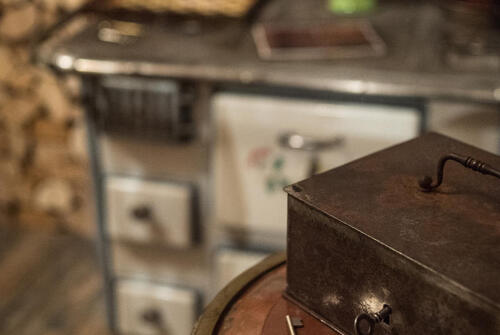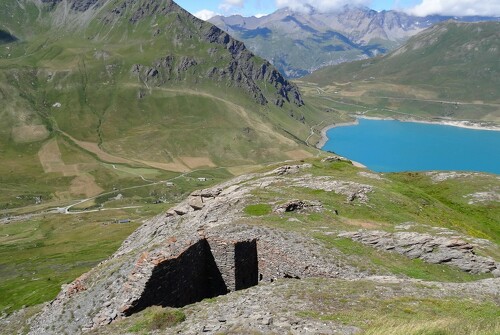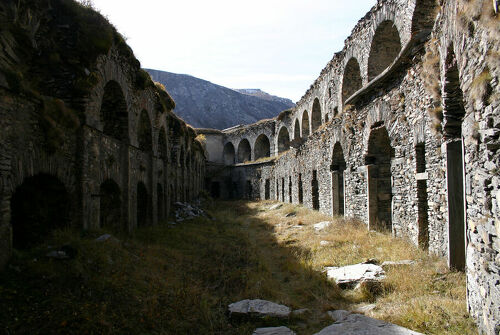Military heritage at Val Cenis

A little history
Val Cenis Haute Maurienne Vanoise and the whole of Savoie only became French in 1860. Prior to this, the entire territory was part of the Kingdom of Piedmont Sardinia. The Col du Mont Cenis was therefore an important passageway between France and the Italian peninsula, but did not mark a border. It wasn't until Savoy became part of France and Italy was "created" that the Col du Mont Cenis marked the boundary between the two states. Between 1860 and 1947, the entire Mont Cenis plateau (where the lake now lies) was Italian. This border zone was marked by the tensions that existed between the two countries, including the construction of forts and bunkers to prevent the passage of armies.
Nineteenth-century forts
At the end of the 19th century, Italy and France built large forts on the Mont Cenis plateau. Fort de Varisselle, Pattacreuse, Ronce and Malamot on the Italian side (plus the fort de la Cassa, which no longer exists), and forts de la Turra and Mont Froid on the French side. Eventually, France and Italy drew closer, and the forts were not used in the First World War. Barely built, the Italian forts had already been overtaken by technical and military advances in artillery. Only the Turra fort, integrated into the mountain with tunnels and powerful defences, was the scene of fighting in 1940. The fort successfully withstood all Italian assaults. After the armistice, the French garrison withdrew with arms and flags to join the French lines, having been honoured by their adversaries.
From this warlike past, a superb heritage remains to be visited today. The Fort de Ronce, with its round architecture, is particularly striking. Easily accessible, it houses explanatory panels on the Mont Cenis plateau and offers a breathtaking view of the lake. Fort Malamot, at an altitude of over 2,900 m, can be reached by hiking or even by gravel bike. A fort above the clouds where it's not unusual to come across ibex.


Bunkers of the 20th century
Looking out over the plateau and alpine pastures, you can see loopholes, concrete entrances that open onto dark corridors, observation points sheltered by bells that are now rusty...
Each bunker had its own rooms, battle stations, etc. Some of these structures are veritable labyrinths spanning several levels. Access to the bunkers is formally inadvisable due to the dangerous nature of the structures (risk of falls, landslides, flooded rooms, inoperative telephone network...). However, it is possible to find out more about these bunkers by visiting the Pyramide Museum, which presents the history of Mont Cenis, or Fort Saint Gobain, between Le Bourget and Modane, a very large French fort on the Maginot Line of the Alps which has been restored and is open to all during the summer season.
-
- Lanslebourg-Mont-Cenis (7)
- Sollières-Sardières (1)
- Termignon (1)
-
- Free (8)
-
Lanslebourg-Mont-Cenis
 cultural heritage
cultural heritageMemorial of Flambeau the postdog
-
Lanslebourg-Mont-Cenis
 equipment
equipmentEscape Games United Val Cenis : The S…
-
Termignon
 cultural heritage
cultural heritageLa Pleureuse de Termignon
-
Lanslebourg-Mont-Cenis
 cultural heritage
cultural heritageTurra Fort
-
Lanslebourg-Mont-Cenis
 cultural heritage
cultural heritagePattacreuse Fort
- 19th C
-
Sollières-Sardières
 cultural heritage
cultural heritageMont-Froid Fort
-
Lanslebourg-Mont-Cenis
 cultural heritage
cultural heritageFort de Variselle
-
Lanslebourg-Mont-Cenis
 cultural heritage
cultural heritageFort de Ronce at the Lac du Mont-Cenis
- 19th C
-
Lanslebourg-Mont-Cenis
 cultural heritage
cultural heritageMalamot Fort
- 19th C
- 1